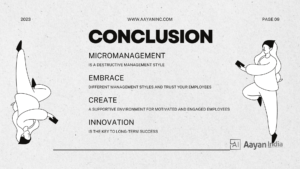Introduction
Micromanagement, a management style characterized by excessive control and close observation of employees’ work, is a familiar term that sends shivers down the spines of most workers. While some managers may see it as a means to ensure precise execution of tasks, the dangers associated with micromanagement far outweigh any perceived benefits. In this article, we will explore the seven major perils of micromanagement and why it ultimately leads to failure in the workplace.
Danger 1: Loss of Control
Micromanagement stems from a desire for control, but ironically, it often leads to losing control over a team. By limiting management style to strict oversight, communication channels become constricted, hindering effective leadership. A diverse team responds differently to various management approaches. When a manager fails to adapt, the ability to guide the team effectively diminishes.
Takeaway: Embrace different management styles to foster open communication and maintain control over the team.
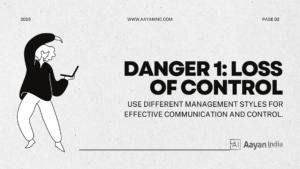
Danger 2: Loss of Trust
Micromanagement corrodes trust between managers and employees. Workers feel suffocated and untrusted, leading to a lack of motivation and engagement. As trust erodes, productivity takes a hit, and employees may start seeking alternative job opportunities.
Takeaway: Cultivate a culture of trust by empowering employees and showing confidence in their abilities.

Danger 3: Dependent Employees
When employees are micromanaged, they become reliant on constant guidance, stifling their independence and creativity. This dependence not only hampers their growth but also puts unnecessary strain on the manager’s time and energy.
Takeaway: Encourage autonomy and allow employees to think and act on their own to unleash their full potential.
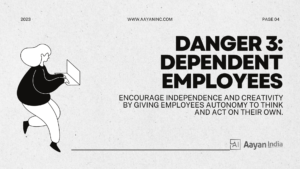
Danger 4: Manager Burnout
Micromanagement is an exhausting endeavor for both managers and employees. Constantly scrutinizing every detail of a project can lead to burnout, negatively affecting the manager’s well-being and job satisfaction. Additionally, this burnout may cascade to the entire team, resulting in reduced productivity and an unhealthy work environment.
Takeaway: Prioritize self-care and step back when necessary to avoid burnout, benefiting both you and your team.
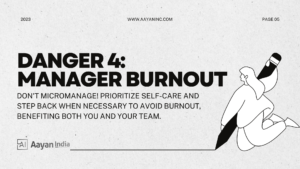
Danger 5: High Turnover of Staff
The consequences of micromanagement can be severe, with high turnover rates being one of them. Employees who feel controlled and unappreciated are more likely to seek employment elsewhere, resulting in significant recruitment and training costs for the company.
Takeaway: Nurture a supportive environment that values employees and encourages their professional growth to retain top talent.
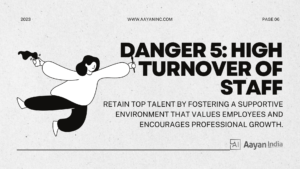
Danger 6: Lack of Autonomy
With micromanagement, employees may feel restricted in their roles, diminishing their enthusiasm and willingness to go beyond their assigned tasks. Providing autonomy fosters creativity and ownership, leading to a more motivated and proactive workforce.
Takeaway: Allow employees the freedom to explore their potential and take pride in their work.
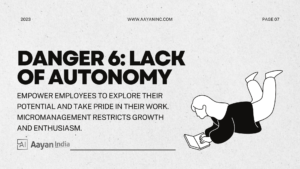
Danger 7: Lack of Innovation
Innovation is the lifeblood of progress. Micromanagement stifles creativity and discourages employees from offering new ideas or solutions. By avoiding risks and suppressing innovation, a company hampers its own growth and competitiveness.
Takeaway: Embrace a culture that encourages experimentation and values innovative ideas, regardless of the outcome.

Conclusion
In conclusion, micromanagement is a destructive management style that sows the seeds of failure within an organization. It hinders productivity, erodes trust, and stifles innovation, ultimately leading to a disengaged and unproductive workforce. As a manager, it is vital to recognize the dangers of micromanagement and foster a collaborative and empowering environment that allows employees to thrive. By relinquishing control and embracing trust and autonomy, you pave the way for success, growth, and a harmonious work atmosphere.
